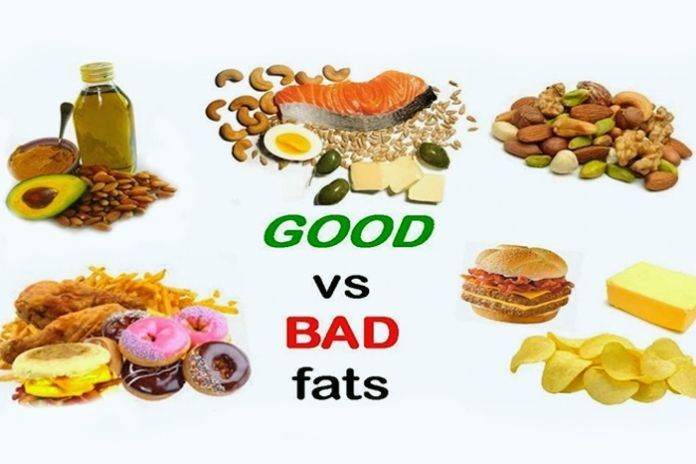Good and bad fats, I’m sure you’ve heard about it many times. Or have you ever heard someone say that they didn’t consume foods with a lot of fat, but did you know that there is a difference between the two types of fat? Yes, not all fat is harmful to health.
Some of them, for example, are excellent sources of nutrients and give energy, in addition to other qualities that we will discuss later.
If you know how to consume fat correctly and correctly, according to your instructor’s recommendations, you can reap the rewards of a proper diet in the results of your workouts.
But What Types Of Fat?
And how to combine the consumption of fats with your training? There are many doubts, but we will demystify everything about it for you to improve your diet and, with that, also improve the health of your body.
To begin with, it is necessary to clarify that there are two types of fat: good (unsaturated) and bad (saturated and trans).
The Good Fat
Unsaturated fat is closely linked to good heart health because they reduce triglycerides and blood cholesterol, raising good cholesterol.
In this way, it helps to reduce plaque in blood vessels, and fewer plaque results, of course, in reducing the occurrence of high blood pressure, heart attack, and stroke.
They are also great allies in cell maintenance, brain development, and resistance to heat when we talk about cells.
They are also divided into monounsaturated and polyunsaturated fats.
Polyunsaturated fats are rich in omega 3 and 6, which directly help protect the heart and reduce the risk of inflammatory diseases and some types of cancer, such as prostate cancer.
The Bad Fat
Saturated and trans fats are famous bad fats. They can be responsible for the opposite effect of good fats if consumed in excess.
They increase the level of cholesterol in the blood, which can lead to cardiovascular disease.
In addition, they can also increase the risk of type 2 diabetes, in which the body does not produce enough insulin to maintain an average glucose level.
Trans fats are vegetable oils that undergo a hydrogenation process to turn these liquid oils into solid fats.
This process was created to improve the consistency of foods and increase some products’ shelf life. About 30 years ago, when trans fats were created, it was believed that they were healthier, but this myth has now been debunked.
What Are The Top Foods With Good Fat?
Good fats are present in foods such as fish like herring, salmon, mackerel, tuna, and sardines.
They are also present in foods of plant origin and are found as liquids at room temperature.
You can find good fats in foods like extra virgin olive oil, walnuts, hazelnuts, avocados, acai berries, eggs, white cheese, dark chocolate, coconut oil, and chia seeds.
What Are The Top Bad Fat Foods?
Saturated or trans fats are wrong and present in animal foods like poultry, red meat, and dairy products.
They are also known as solid fats because the foods in which they are present at room temperature have a tangible form.
Some of these foods are hydrogenated oils, butter, cream, yogurt and palm oil, bacon, baked goods, stuffed cookies, and many other foods that many consume without worrying about the quantity and frequency.
Consuming The Right Way
There is a limit to the consumption of both good and bad fats.
Of course, you shouldn’t deprive yourself of eating butter for breakfast, for example, or stop putting cream in recipes where it’s essential.
Therefore, the recommendation is that consumption is conscious, which implies moderation in the intake of foods containing trans and saturated fats or even substituting other similar foods, but with lower fat content.
Another tip is to check the level of the solidity of the butter you consume because the harder it is at room temperature, the higher the level of saturated fat it has.
What Can You, For Example, Replace
Food replacement is a good option for not suffering so much – and also not ingesting saturated fat at alarming levels.
You can replace, for example, the famous snacks based on cookies with low-fat yogurt, fruits, and natural sandwiches with wholemeal bread.
If you can’t live without red meat, you can replace fatty meats with cuts that are less harmful to your health, such as breast, chuck, hard top, soft top, filet mignon, lizard, and rump.
In pork, a better bet is the sirloin.
Another good attitude is to remove excess fat from meats before preparation; now, if you don’t see any problems, you can do better: replace red meat with skinless chicken and fish.
When we talk about vegetable oils, prefer sunflower oil if you cannot avoid consumption. Keep it in the fridge and discard it if you don’t consume it in two months.
We also need to talk about açaí, which works very well as an antioxidant in the world because it contains omegas 3, 6, and 9, so don’t think about avoiding it, but the side dishes like granola and guarana syrup, which make it even more caloric.
But What Are The Correct Levels Of Consumption Of Good And Bad Fats?
Don’t think that you have to eliminate every kind of fat from your diet. This is dangerous.
We need fat (including saturated fat). Our skin is covered in cholesterol because our hormones and neurotransmitters also need both good and bad fats.
You can stop drinking for a period, but not permanently. The exciting thing is to use, in the measure of 2 for 1, the amount of unsaturated saturated fat, but of course without excesses.
The food plan recommends a daily caloric intake of 2,000 calories for women and 2,500 for men, and the consumption of 30% fat about the total caloric value.
ALSO READ: HOW TO KNOW IF YOU ARE OVERWEIGHT

